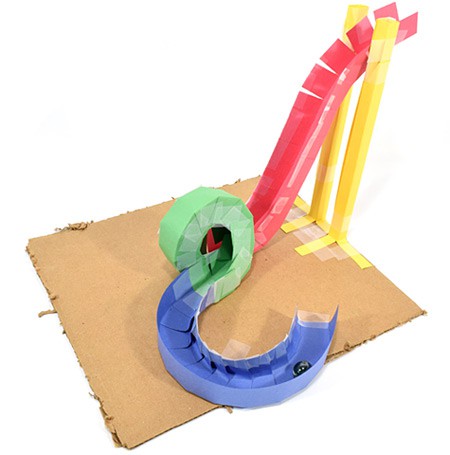This post follows on from the previous few posts where:
- I reviewed the scriptures for this week's Come Follow Me Primary lesson. (link)
- I then brainstormed various science themes that could link to the scriptures. (link)
- Yesterday I worked up one of those themes into a potential lesson plan. (link)
In this post, I'll provide a concise lesson plan for teachers to use if they find this useful. The first part of this post (in green) is an overview of the lesson aims, and the second part (in yellow) is the actual lesson plan that you can use.
Overview
What's the lesson about?
In the Book of Samuel. the Israelites are threatened by the Philistines, who challenge them to a winner-takes-all duel with their champion Goliath. The young shepherd boy David steps up, and against the odds, wins.
What's the spiritual theme?
If you have a strong faith, you can acheive difficult things.
What's the science topic?
Potential energy can be used to do useful work. We'll leverage this in an experiment with marbles and a simple rollercoaster, where we show how a marble can roll down a hill and then go upside down through a loop-the-loop.
How does the science relate to the spiritual theme?
Just like potential energy can be harnessed to produce useful kinetic energy, so can spiritual potential energy be used to produce useful work.
What will make it fun?
Making and playing with the rollercoaster will hopefully be fun.
Lesson Plan
Here's what you'll need in advance:
- Paper or card
- Child safe scissors
- Sellotape
- Marbles
- A set of scriptures (Old Testament)
The plan for the lesson is as follows. For more detailed information, see the previous Idea Workup post which explains the thinking behind the plan.
- Introduce the Book of 1 Samuel. Tell the story of how, after the previous stories (of Moses helping the Israelites to find the Promised Land after 40 years, then Joshua leading them to conquer it, then the era of different Kings, and the story of Ruth and Boaz), the Israelites were under threat again, this time from the Philistines. This time the Philistines challenge them to a winner-takes-all duel against their giant hero Goliath. Everyone is too afraid to fight him, except for a young shepherd boy, David.
- Have the kids read out 1 Samuel 17: 4-7, and discuss how big Goliath was.
- Discuss how you would overcome someone like Goliath.
- Read 1 Samuel 17:49 which reveals how David won the day.
- Talk about how a simple stone can have a lot of energy, and can do useful work. David loaded the stone with a great deal of potential energy (from the sling). We can do something similar by lifting the stone up high, then releasing it.
- Explain how we're going to build this rollercoaster.
- We'll need to follow the instructions on the Science Buddies site. This short YouTube instructional video shows what to do. See if you can get the loop working, and perhap draw a picture of Goliath on the side. Alternatively, if the loop is too hard, just have the marble descend, then ascend through a small hill, and have it go through a picture of Goliath with a hole in his head. Let the kids have fun with this.
- The basic trick is to make tracks that you can mould into different shapes. You do this by folding paper into three strips (floor and two side walls) then cutting along the side walls at regular intervals. You can then form different shapes with the tracks. Fix them into place by using tape on the side wall segments, then connect them together. You may want a small box to elevate the start of the rollercoaster track.
- Summary of the lesson. We could make a small stone or marble do something hard, just like David did against Goliath. We used potential energy to make this happen. David used potential energy too, but also had a lot of faith, or "spiritual potential energy" where he believed strongly in Heavenly Father, and that helped him too. (Have someone give a testimony of when a strong faith helped them achieve something difficult.)
- Closing prayer.
I hope you find this lesson plan useful, whether it's for using for your lesson as-is, or for inspiration for putting your own touch on the lesson. If you have any comments or feedback, feel free to reply in the comments below, or on the Twitter thread.



Comments
Post a Comment